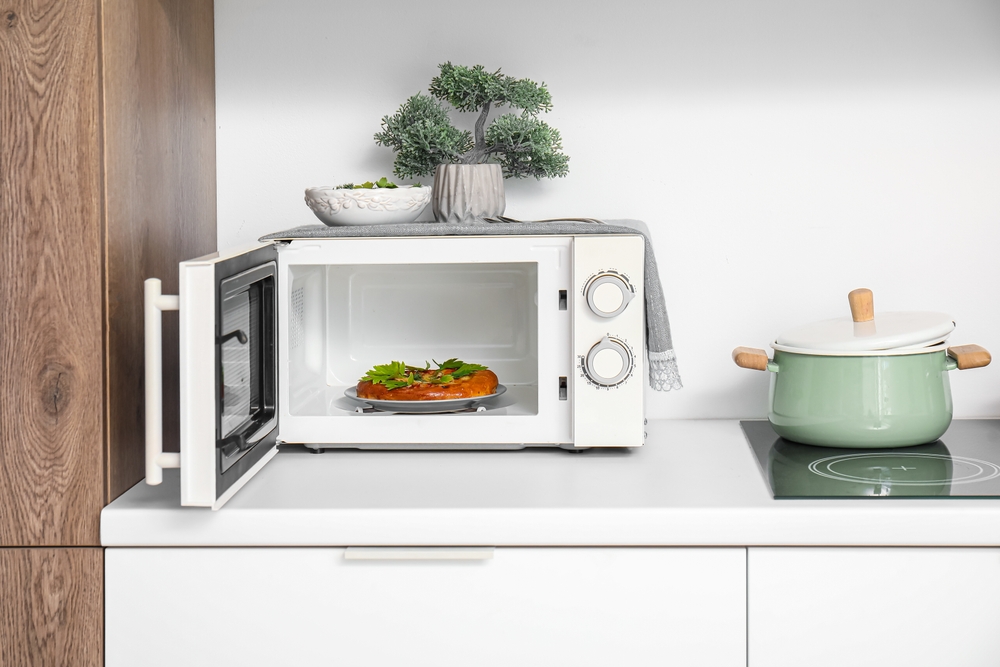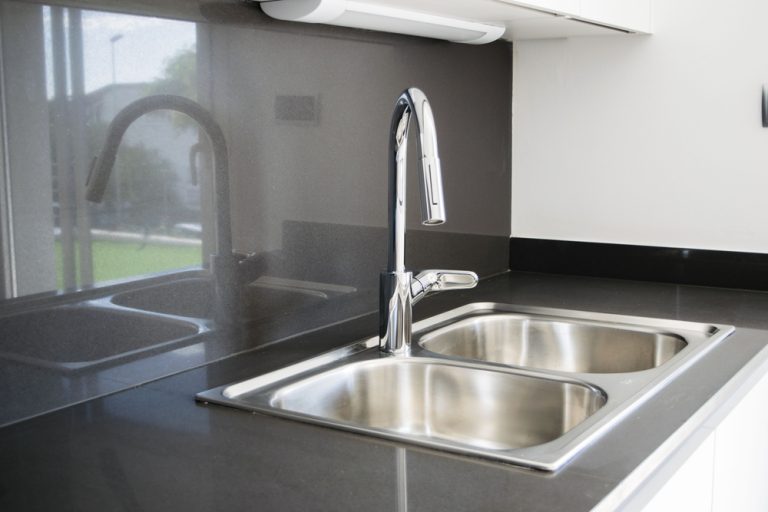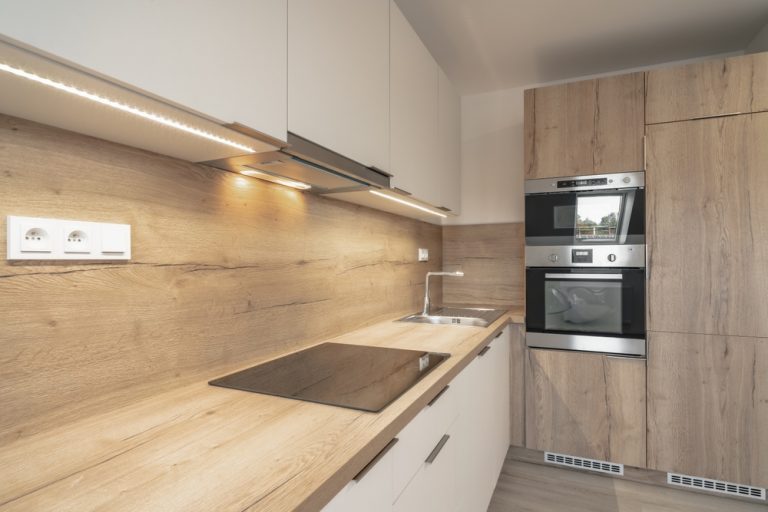Where to Put a Microwave in a Kitchen Remodel?

When planning a kitchen remodel, one of the key decisions you’ll need to make is where to put a microwave in a kitchen remodel. Although it might seem like a minor detail, the location of your microwave can significantly impact the functionality, convenience, and overall flow of your kitchen. Whether you’re opting for a built-in microwave, an over-the-range model, or a countertop option, finding the perfect spot is essential for both aesthetics and practicality.
In this blog, we’ll explore various placement options for your microwave during a kitchen remodel, considering factors like convenience, safety, and design.
Built-In Microwave Options
A built-in microwave is a popular choice in modern kitchen designs, as it can be seamlessly integrated into your cabinetry, creating a streamlined look. There are several locations where a built-in microwave can be installed.
One option is a microwave drawer, which is installed under the countertop, typically in an island or lower cabinet. This type of microwave opens like a drawer, allowing you to easily place or remove food without lifting it up high.
Microwave drawers are ergonomically friendly, especially for those who might find it difficult to reach higher cabinets. They also save counter space and create a sleek, modern look. However, microwave drawers can be more expensive than traditional models, and not all kitchen layouts are conducive to this option. Additionally, it may be less accessible for children or those with mobility issues.
Another built-in option is wall cabinet installation. A built-in microwave can be installed within a wall cabinet, either at eye level or slightly higher, depending on your preference. This option is often paired with an oven or other appliances to create a cohesive look. Placing the microwave at eye level makes it easy to monitor cooking progress and access the controls.
It also frees up counter space and can be incorporated into a wall of appliances for a unified design. However, you should ensure that the microwave is placed at a height that is comfortable for all users. Installing it too high can make it difficult to reach hot dishes safely, and proper ventilation is necessary to prevent overheating.
For those who prefer an under-counter option, a built-in microwave can also be installed below the countertop in a base cabinet. It can be a standard microwave placed on a shelf or a built-in model designed for under-counter use.
This placement keeps the microwave out of sight, maintaining a clean and uncluttered appearance. It also provides easy access for children or individuals with mobility challenges.
However, under-counter placement may require bending down to access the microwave, which could be inconvenient for some users. It’s also important to consider how the microwave’s placement will impact the flow of your kitchen.
Over-the-Range Microwave
An over-the-range (OTR) microwave is a classic option that combines a microwave and a range hood in one appliance. This space-saving solution is especially popular in smaller kitchens where counter space is at a premium.
One of the primary advantages of an OTR microwave is its space-saving design. Placing the microwave over the range frees up valuable counter space and can make a small kitchen feel more open.
Additionally, OTR microwaves often come with built-in ventilation systems, which can replace a separate range hood. This is a practical solution for kitchens with limited space for a dedicated hood.
An OTR microwave also creates a cohesive look by aligning the microwave with the stove and other appliances, contributing to a streamlined kitchen design.
However, there are some considerations to keep in mind. The height of an OTR microwave can be a concern, especially if it’s placed too high. It should be positioned at a height that allows for safe and easy access to hot food.
While OTR microwaves offer built-in ventilation, they may not be as powerful as dedicated range hoods. If you do a lot of high-heat cooking, you may need a more robust ventilation system.
Finally, reaching above the stove to access the microwave can be inconvenient, particularly for shorter individuals or those with limited mobility.
Countertop Microwave Placement
Countertop microwaves are the most traditional and widely used option. They’re versatile, easy to install, and can be moved to different locations if needed. However, their placement requires thoughtful consideration to avoid cluttering the kitchen.
One of the key advantages of a countertop microwave is its flexibility. These microwaves can be placed almost anywhere in the kitchen, making them a flexible option for various layouts and designs.
Countertop models are also typically less expensive than built-in or over-the-range options, and they don’t require special installation. Placing the microwave on the counter makes it easily accessible for everyone in the household, including children.
However, the biggest drawback of a countertop microwave is the amount of space it occupies. In a small kitchen, losing valuable counter space to a microwave can be a significant downside.
Additionally, a countertop microwave can disrupt the clean lines of a modern kitchen design. If aesthetics are important to you, consider integrating the microwave into a built-in setup or choosing a model that complements your kitchen’s style.
Ensure that the chosen location has a nearby power outlet to avoid unsightly extension cords running across the kitchen.
Microwave Placement in an Island
Installing a microwave in a kitchen island is a trendy option that combines functionality with modern design. This placement is often used in larger kitchens with spacious islands.
A microwave in the island is centrally located, making it easily accessible from various parts of the kitchen. It’s also convenient for multiple users, especially in a busy household.
Additionally, installing the microwave in the island keeps it out of sight, maintaining a clean and clutter-free appearance in the rest of the kitchen. An island microwave can be seamlessly integrated into the kitchen design, contributing to a cohesive and polished look.
However, not all kitchen islands have enough space for a microwave installation. Ensure that your island is large enough to accommodate the appliance without compromising storage or seating.
The microwave should also be installed at a height that is comfortable for all users. Too low, and it may require excessive bending; too high, and it could be difficult to reach. Proper ventilation is crucial when placing a microwave in an island, so ensure that the appliance has adequate airflow to prevent overheating.
Additional Tips for Microwave Placement
When deciding where to place your microwave during a kitchen remodel, consider a few additional factors to optimize functionality and design.
Firstly, think about the workflow in your kitchen. Place the microwave near the food preparation area, refrigerator, or pantry to streamline the cooking process. This reduces the need to walk across the kitchen to heat or defrost food. Additionally, consider the safety and accessibility of the microwave.
Ensure that it’s placed at a height that is safe for all users, especially children. Avoid placing it too high or too low, where it could be difficult to access hot food safely.
Lastly, consider the overall aesthetic integration of the microwave into your kitchen design. The placement should complement the layout and style, contributing to a cohesive and visually appealing space.
Conclusion
Choosing the right location for your microwave during a kitchen remodel is essential for creating a functional and aesthetically pleasing space. Whether you opt for a built-in microwave, an over-the-range model, or a countertop option, the key is to find a spot that fits your kitchen’s layout, your cooking habits, and your design preferences.
By considering factors like convenience, safety, and aesthetics, you can ensure that your microwave is both accessible and seamlessly integrated into your new kitchen. With careful planning, your kitchen remodel will not only enhance the overall functionality of the space but also reflect your personal style and preferences.






